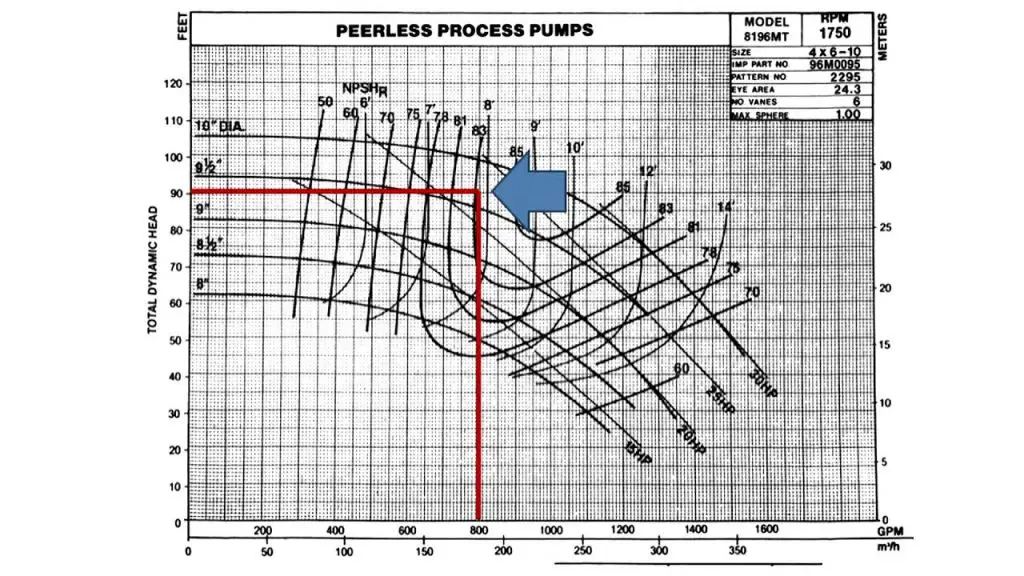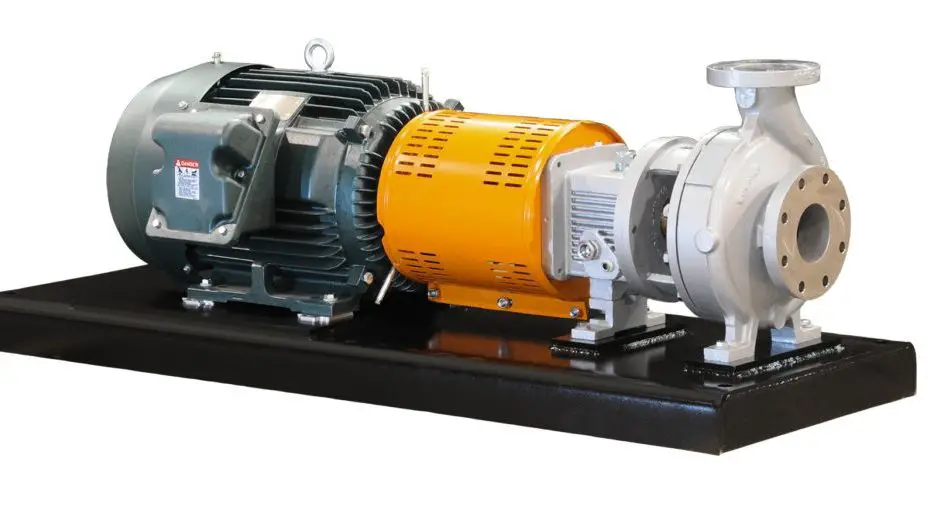Centrifugal pumps are the most common type of pumps that are widely used to pressurize, circulate, or transfer liquids from one location to another. They are mostly driven by electric motors such as induction or DC motors.
Centrifugal pumps can be found in various verities depending on the application, duty hours, flow requirements, type of materials being handled, and pressure-flow demands.
A centrifugal pump is equipment that is intended to collect liquids from a low-pressure source & pressurize it by imparting the centrifugal force in the impeller with the aid of an engineered volute casing. This action creates a pressure difference that results in the form of liquid transfer from one source (tank, vessel, exchanger, etc) to another.
How does a centrifugal pump work?
A centrifugal pump works on the phenomenon of a centrifugal force, which is generated when an object is constantly rotated about its axis. A centrifugal force always acts away from the center of rotation.
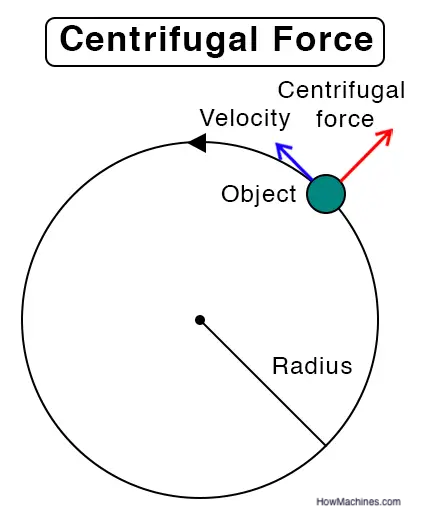
A centrifugal pump consists of a key component that is termed an ‘impeller’. This component is a source that creates a dragging effect, more approproately ‘vacuum or low-pressure effect’. This vacuum effect encourages liquid flow inside the casing, wheareas the impeller transmits a rotational force to the liquid resulting in high pressure. Volute casing in a centrifugal pump acts to convert liquid velocity from impeller (i.e kinetic energy) to pressure (i.e potential energy) that yields a liquid movement across the system.
What are the 3 types of centrifugal pumps?
Centrifugal pumps can be classified or divided into multiple categories depending on the design or classification criteria. The three types of centrifugal pumps include single-stage, Two-stage, or Multistage centrifugal pumps based on the impeller qty.
Single-stage centrifugal pumps are provided with a single impeller inside the casing whereas a two-stage centrifugal pump consists of two impellers assembled one after the other to transfer liquid at much higher pressures. A multistage centrifugal pump consists of more than 02 impellers and is used to transfer liquids at very high pressures.
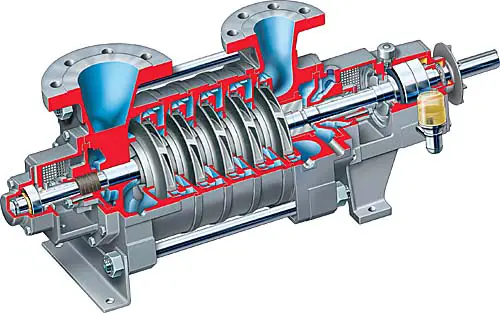
Another classification of centrifugal pumps based on the liquid flow criteria is the axial, radial, and mixed flow type pumps.
What are the main features of a centrifugal pump?
A centrifugal pump dominantly consists of an outer casing, bearing housing, shaft, impeller, coupling, and mechanical seal or gland system.
Outer Casing
The casing of a centrifugal pump is a major component, responsible to hold the liquid and pump components in place. Casings of centrifugal pumps are mainly cast with gray cast iron, Carbon steel, duplex, or any material chosen by the end-user. A centrifugal pump casing is cast and machined such that a volute profile is generated, which acts as a velocity to pressure conversion source.

Bearing Housing
The bearing housing of a centrifugal pump consists of an antifriction ball or rolling bearings that are intended to hold the pump shaft in place and allow smooth rotation about the center axis. A centrifugal pump bearing housing can be oil or grease lubricated depending on the usage, temperatures, and bearing types.
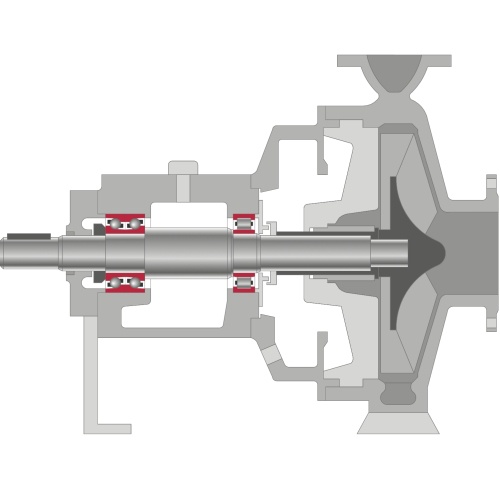
Shaft or Rotor
The shaft in a centrifugal pump is responsible to hold the impeller in place and allowing rotation of the impeller inside the casing. A coupling hub is mounted with a key at one end while the other end of the shaft consists of impeller(s). Shafts in centrifugal pumps are held in place by radial and thrust bearings with both antifriction and friction types of bearings used.

Impellers
Impellers in centrifugal pumps are provided to induce liquids inside the casing and use the vanes to impart centrifugal force to the liquid when the shafts rotate at high speeds. Impellers in a centrifugal pump can be widely divided into three categories, open, closed, semi-open impellers. Each impeller type is selected based on the liquid density and composition by the pump manufacturer.
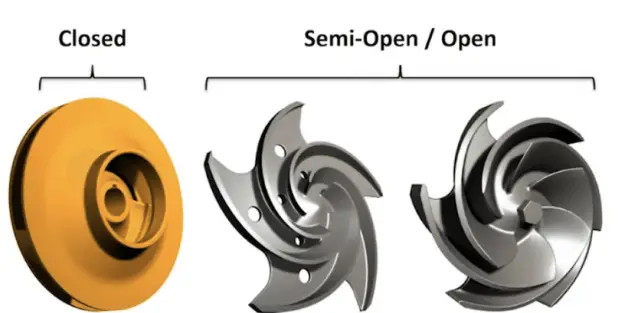
Coupling
A Centrifugal pump coupling is used to couple the pump shaft to the driver (mainly motors) to allow the pump rotation. Couplings can be flexible and non-flexible depending on the loads and operational requirements.

Mechanical Seal or Gland System
A Mechanical seal or gland system in a centrifugal pump is used to hold the service inside the pump during pump operation. A mechanical seal is more efficient in holding services inside the centrifugal pumps and widely used in industrial-grade pumps. They can be single or double mechanical seals depending on the hazards associated with the pumping media.
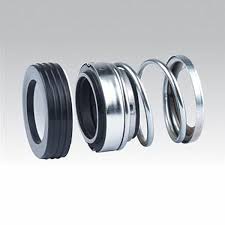
What are the advantages and disadvantages of centrifugal pumps?
Centrifugal pumps have many advantages over PD pumps when it comes to their usage at home or in industries.
ADVANTAGES OF A CENTRIFUGAL PUMP:
- Easy to operate
- Used to transfer high flow rates
- Less periodic maintenance required
- smooth operation at various load requirements
- can be used in series and parallel operation
DISADVANTAGES OF A CENTRIFUGAL PUMP:
- Low-pressure ratings in single stage pumps
- high initial investment
What is a centrifugal pump where it’s used?
A centrifugal pump is a piece of rotary equipment, used against numerous requirements to cope up with the liquid flow demands. It is mainly used in industrial-grade applications, homes, sewage systems, Agriculture, etc.
A centrifugal pump is capable of handling products like hydrocarbons, slurries, water, chemicals, oils, alkali and acids, brine solutions, nuclear grade liquids, etc.
What is the difference between a centrifugal pump and a rotary pump?
The difference between a centrifugal and rotary pump revolves around their construction and working phenomenon. A rotary pump is commonly termed a positive displacement pump as a fact that liquid flow inside the pump takes place due to some mechanical aid/push. It may be a set of movable vanes, bladders, Geared shafts, lobes or internal gears.
A centrifugal pump is different in its construction from a rotary pump, the liquid flow from a centrifugal pump is not supposed to be a 100% push towards the downstream circuit. In fact, there may be minor or low flow from a centrifugal pump without the pump getting hurt.
Limitations of a centrifugal pump
A centrifugal pump has certain limitations that need to be seriously taken into consideration before choosing to go with any one of them.
- A centrifugal pump can deliver a certain head under provided conditions (service, NPSHa, Temperature, and pressure). Since the change in any of the above parameters would result in flow and discharge head variation
- A centrifugal pump can deliver low head pressure compared to a Positive displacement pump
- Flow provided to a centrifugal pump shall be free of air pockets and constant, otherwise pump will cause trouble if flow across the pump is erratic
- NPSHr of a centrifugal pump shall be lower then the Available NPSH, otherwise pump will cavitate causing high vibration and knocking at the impeller
- Replacement of impeller where corrosive service, liquid containing slurries and cavitation issues are faced
Is a centrifugal pump a positive displacement pump?
A Centrifugal pump isn’t a positive displacement pump because of the fact that a certain flow reversal happens when the downstream circuit is closed. A centrifugal pump will ideally cause no harm to the discharge lines or the equipment in case no flow condition (provided the system is designed above the shutoff head).
Contrary to this a PD pump will either damage the downstream components in piping or the discharge circuit if a PRV is not provided on the discharge circuit. By the term positive displacement or PD, it is meant that the flow in each stroke/rotation shall always be directed outward with theoretically no flow reversed or circulated back to the pump.
Can centrifugal pump air?
A centrifugal pump is intended to transfer liquids or slurries only. Pumping air through a centrifugal pump is not recommended. However, a centrifugal pump lowers the liquid pressure at suction creating a draft or suction effect. This suction effect is the result of the pressure difference between the source of supply and the suction eye. If air pockets are trapped inside a centrifugal pump casing, this would result in loss of the suction draft, and the pump’s capability to provide flow will be greatly compromised, resulting in cavitation.
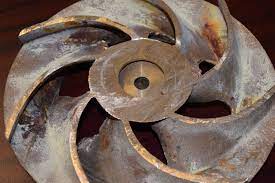
Therefore a centrifugal pump is primed before being taken into service. Priming a centrifugal pump is referred to the removal of entrapped air & filling it with the intended service. There are various methods used to prime a centrifugal pump. This includes the usage of a vent valve at the highest point of the casing, where the air is bled out as a result of liquid fill inside the casing. The second method is to use a bleed valve on the discharge piping and let the service flow into the suction, resulting in air displacement.
A centrifugal pump is always started with immediate discharge closed (min circulation line shall however be open) in order to make sure the pump operates near the shutoff head. This helps in a smooth start-up. A minimum suction line on the pump is provided by the manufacturer to help the safe operation of the pump so as the service temp remains normal, otherwise, the temp may rise to undesired amplitudes if the pump is continuously operated on shutoff.
What are the basics of Centrifugal Pump Construction
In light of the American Petroleum Institute, API-610. The basics of a centrifugal pump construction are provided in the table below:
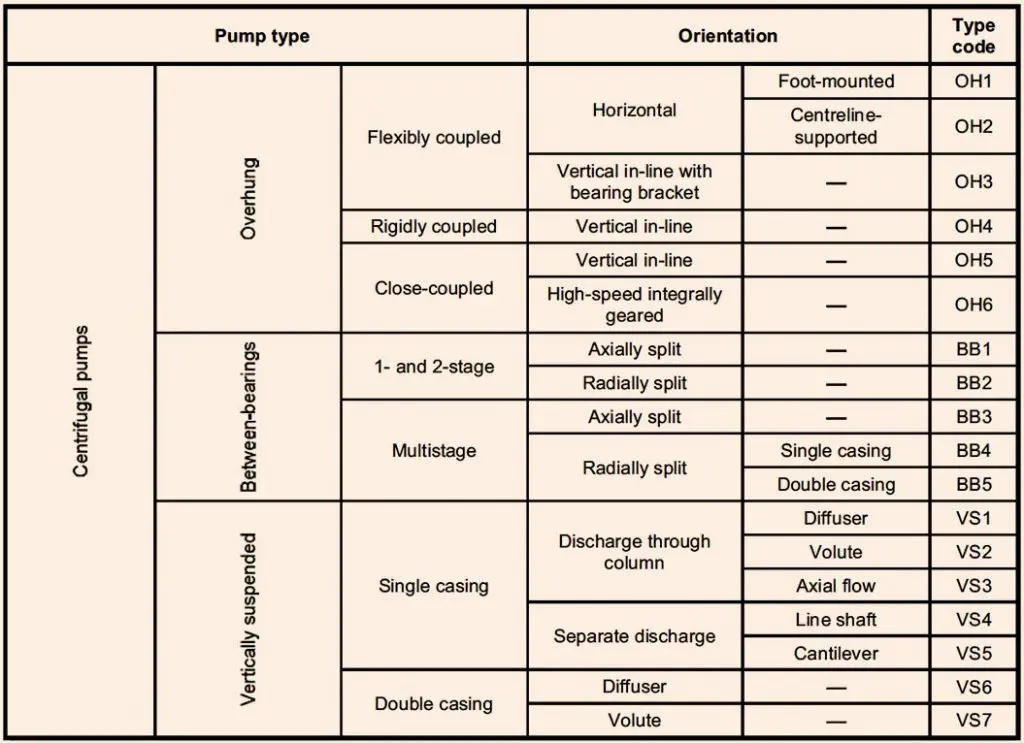
Why centrifugal pump is called high discharge pump?
A centrifugal pump is called a high discharge and low-pressure pump because of the fact that it allows unrestricted flow at much higher rates than other types of pumps. PD or rotary pumps are less capable of delivering high flow rates compared to centrifugal and turbine pumps.
A centrifugal pump can operate at variable discharge pressure and thus flow as per the end-user requirement. For high flow rates, a centrifugal pump would require a constant flow provided at the suction with NPSHa maintained. PD and Rotary pumps have limitations in size and flow rates due to the inherent design characteristics. Centrifugal pumps can operate variable discharge flows with the design curve followed.
What is a Centrifugal pump Curve ?
A centrifugal pump operates within a certain range of flow and discharge pressure. The charactersistics of a centrifugal pump operation are defined by a centrifugal pump curve. This pump is a prediction of the amount of flow or head (pressure) the pump is capable with efficiency of operation, power requirement at a specific impeller size. Each pump curve may have various impeller sizes that the individual curves are drawn onto. A centrifugal pump curve aslso provides a good idea of the pump best efficiency point.
